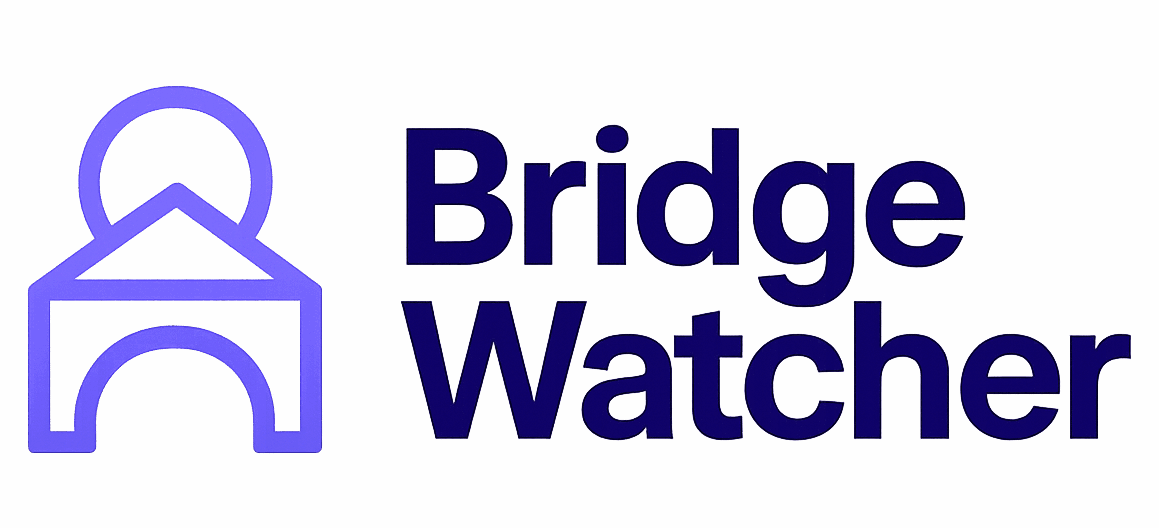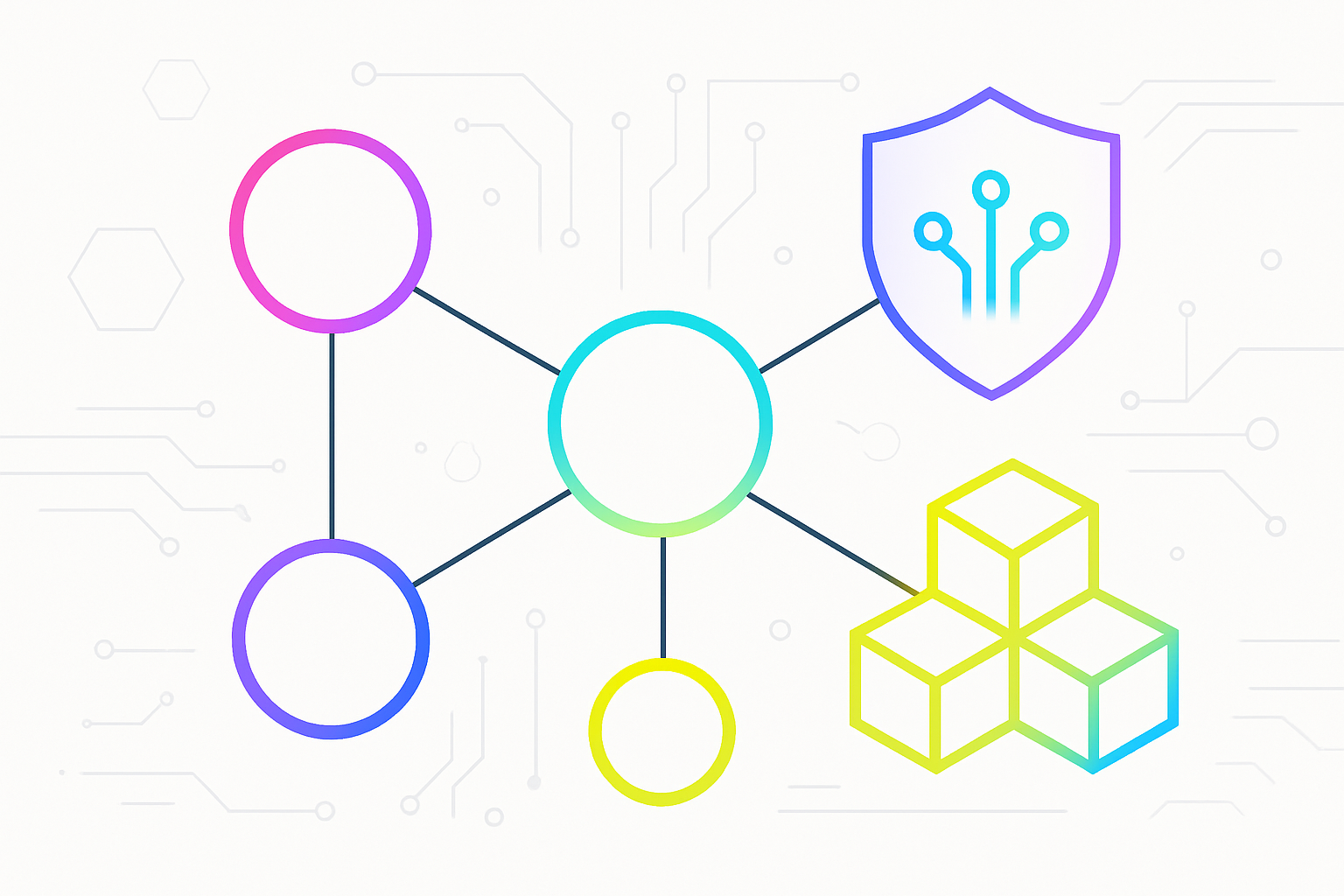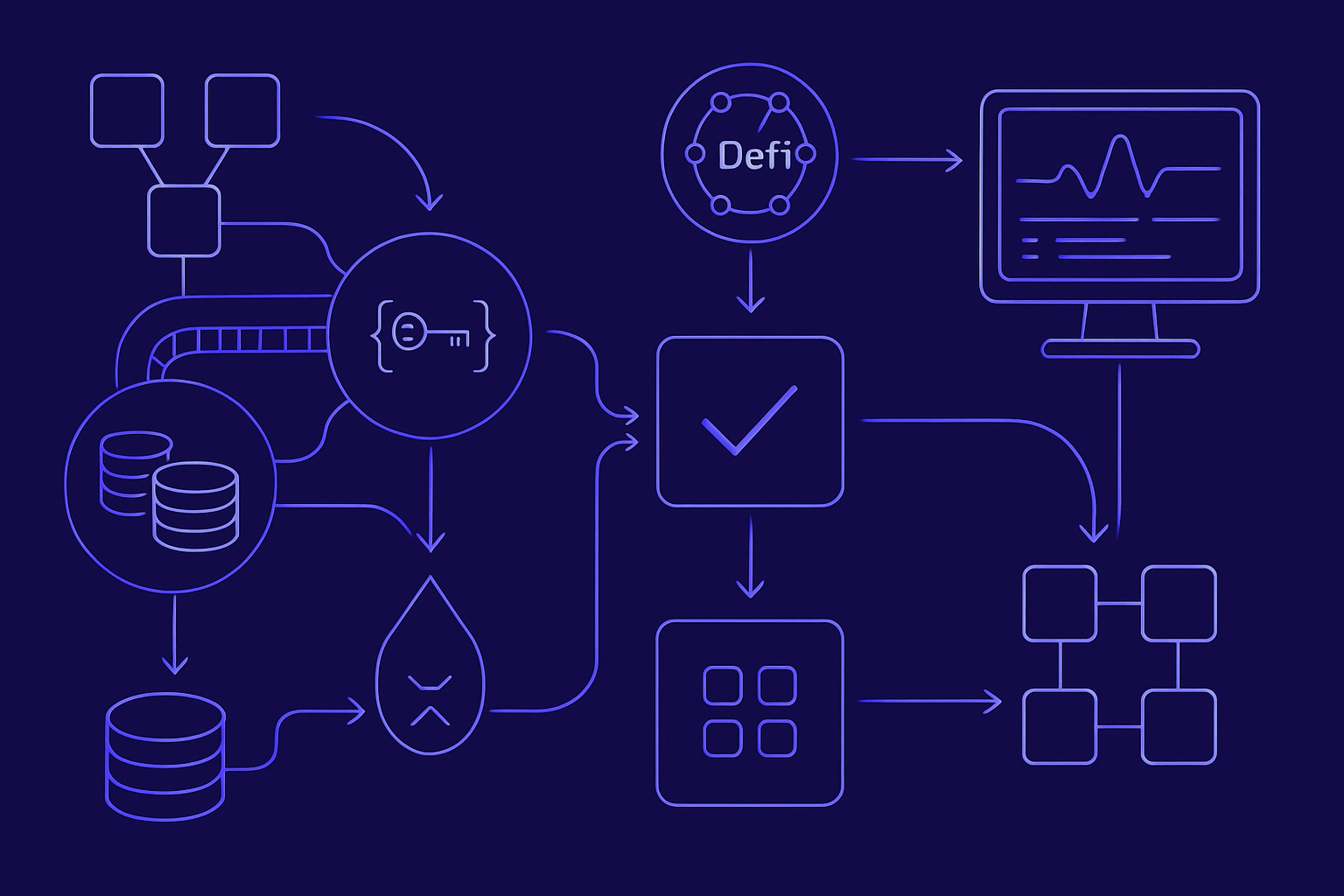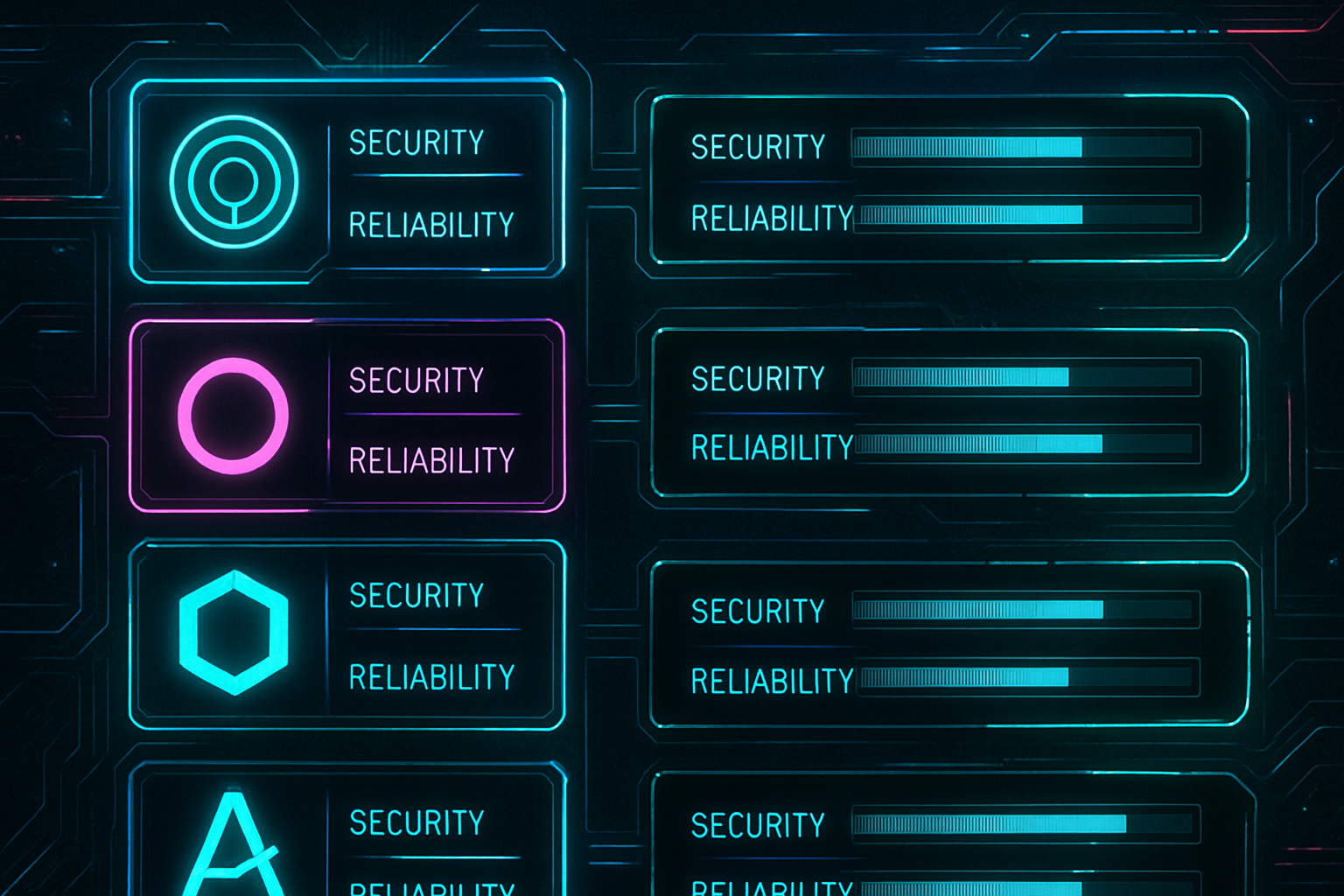
Cross-chain messaging protocols are the linchpin of blockchain interoperability, enabling seamless communication and asset transfers across disparate networks. As DeFi matures and institutional adoption accelerates, the security and reliability of these protocols have become paramount for developers, users, and risk managers. But not all cross-chain solutions are created equal. Their architectural choices, validator models, and operational histories shape their risk profiles in profound ways.
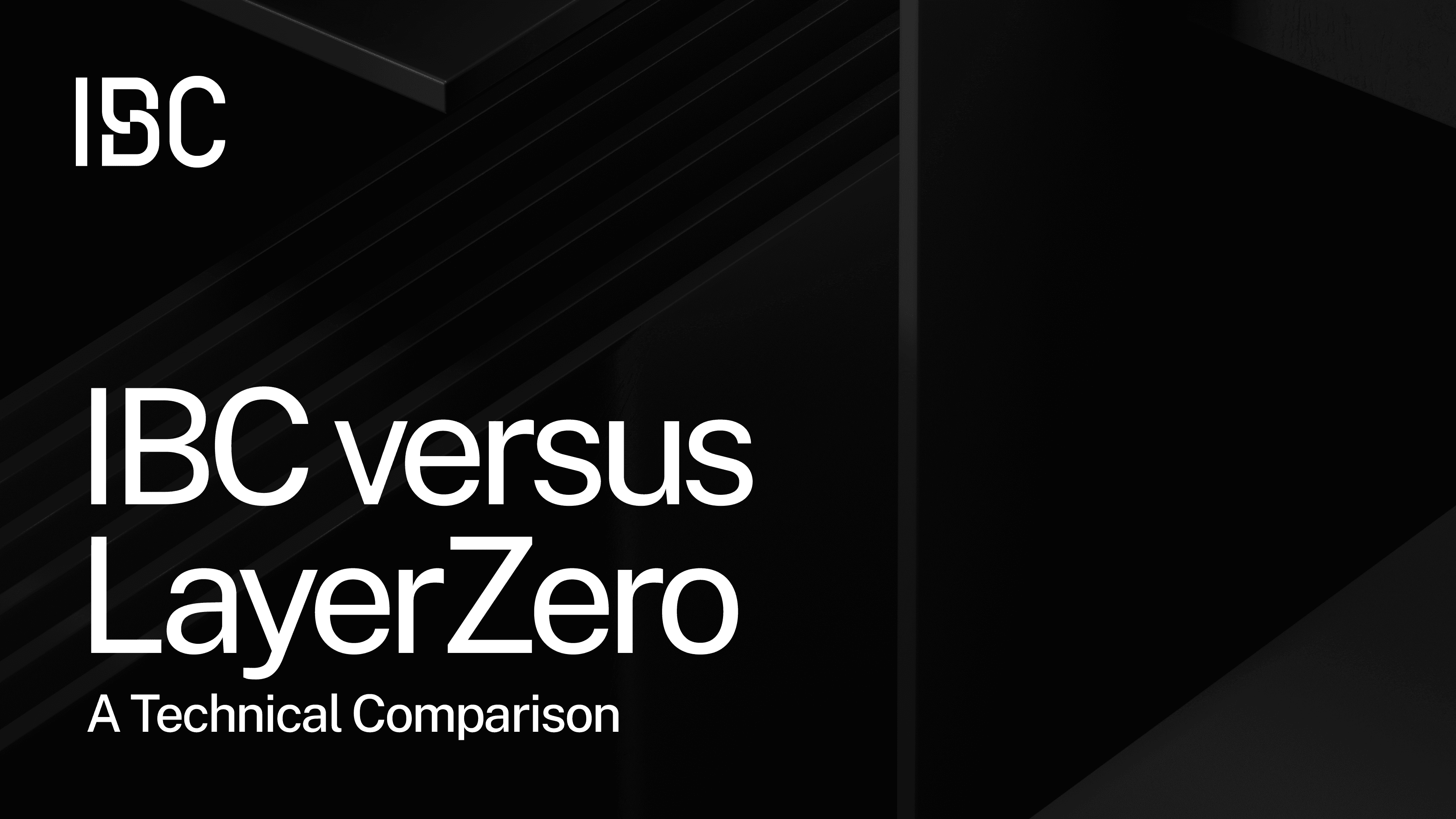
The Five Pillars: Market-Leading Cross-Chain Messaging Protocols
This analysis focuses on five of the most prominent cross-chain messaging protocols shaping the current landscape:
Comparison of Leading Cross-Chain Messaging Protocols: Security and Reliability
| Protocol | Architecture 🏗️ | Security Model 🔒 | Decentralization 🌐 | Notable Incidents ⚠️ | Reliability Metrics 📊 |
|---|---|---|---|---|---|
| IBC (Inter-Blockchain Communication) | Light client protocol with trust-minimized relayers | Trust-minimized, relies on light clients and relayers | High (decentralized relayers) | None reported | Widely adopted in Cosmos ecosystem, strong uptime |
| Wormhole | Guardian-backed bridge (17 permissioned validators) | Guardian committee attestation (permissioned) | Low (centralized guardians) | $321M exploit (Feb 2022) | Over 1B messages, $39B+ volume |
| LayerZero | Proof aggregation with Decentralized Verifier Networks (DVNs) | Aggregated proofs from multiple verifiers | Medium (decentralized DVNs) | No major incidents reported | Rapid adoption, robust proof model |
| Chainlink CCIP | Hybrid model (not fully disclosed, leverages Chainlink oracles) | Oracle-driven security, multi-layered | Medium (decentralized oracles, but not fully open) | No major incidents reported | Growing adoption, used by major DeFi apps |
| Axelar | Decentralized validator network | Validators secure cross-chain messages (PoS) | High (decentralized, permissionless validators) | No major incidents reported | 478% tx growth, 430% rise in active addresses |
Each protocol has carved a significant niche in cross-chain communications. Let’s examine how their design philosophies impact security and reliability.
Architectural Approaches: Decentralization vs. Trust Assumptions
1. Inter-Blockchain Communication Protocol (IBC):
IBC is the backbone of Cosmos interoperability. It employs a light client protocol, leveraging trust-minimized relayers to facilitate communication between chains. This model minimizes external trust assumptions, each chain independently verifies messages using cryptographic proofs rather than relying on a centralized authority or small committee. The result is a system that is highly resistant to single points of failure but demands rigorous implementation discipline from participating chains.
See detailed protocol mechanics at BlockEden.xyz.
2. Wormhole:
Wormhole’s architecture centers on a set of 17 permissioned “Guardians”: validators who sign off on cross-chain transactions. While this guardian-backed bridge design enables high throughput and rapid finality, it introduces centralization risks. The infamous February 2022 exploit that led to a $321 million loss was traced to vulnerabilities in its codebase and validator operations (chain.review). Since then, Wormhole has processed over 1 billion messages with more than $39 billion in volume (Blockworks.com), but its model remains under scrutiny for concentration of power among Guardians.
3. LayerZero:
LayerZero innovates with its proof aggregation model using Decentralized Verifier Networks (DVNs). Rather than relying on a fixed committee or relayer set, LayerZero aggregates proofs from multiple independent verifiers for each message transfer. This approach enhances robustness by reducing reliance on any single actor or group while maintaining efficient message delivery (BlockEden.xyz). The DVN model represents an evolution toward greater decentralization without sacrificing performance.
4. Chainlink Cross-Chain Interoperability Protocol (CCIP):
CCIP leverages Chainlink’s extensive oracle infrastructure to facilitate secure data and asset transfers across blockchains. Its hybrid approach combines decentralized oracle networks with programmable risk controls, such as rate limits and circuit breakers, to mitigate attack vectors common in bridge exploits (chain.review). This layered defense mechanism aims to provide both flexibility and resilience against emerging threats.
5. Axelar:
Axelar deploys a decentralized validator network governed by Proof-of-Stake consensus to secure its cross-chain communication layer (Blockworks.com). Over the past year alone, Axelar has seen interchain transactions surge by 478% and active addresses rise by 430%, underscoring strong adoption and operational reliability.
Security Metrics: Incidents, Audits and Validator Configurations
The true test of any cross-chain messaging protocol lies in how it withstands real-world attacks, and how quickly it adapts post-incident.
- Breach History: Wormhole’s $321 million exploit remains one of the largest bridge hacks to date (chain.review). In contrast, IBC has largely avoided major incidents due to its minimized trust assumptions.
- Validator Diversity: Protocols like IBC and Axelar emphasize broad validator participation to reduce collusion risks; Wormhole’s fixed Guardian set is more centralized.
- Audit Cadence: Frequent code audits are critical for all protocols given the evolving threat landscape, recent reports highlight ongoing efforts across these platforms (BlockEden.xyz, Blockworks.com).
Examining the landscape through these lenses reveals stark differences in how protocols manage risk and deliver reliability. The diversity in validator models, incident histories, and audit transparency means that not all cross-chain messaging solutions are equally suited for every use case or risk profile.
Reliability Benchmarks: Performance, Uptime, and Ecosystem Reach
Performance metrics are essential in assessing the operational reliability of cross-chain messaging protocols. For instance, Wormhole’s impressive throughput, over 1 billion messages relayed and $39 billion in volume, demonstrates its capacity to handle institutional-scale flows (Blockworks.com). However, volume alone does not equate to reliability if security trade-offs are present.
IBC stands out for its uptime consistency across the Cosmos ecosystem. By using light clients and trust-minimized relayers, IBC minimizes downtime due to validator failures or network splits. This approach has been instrumental in avoiding catastrophic failures, a fact often highlighted by developers building on Cosmos chains.
Axelar’s rapid growth, 478% increase in interchain transactions and a 430% jump in active addresses over the past year, signals both strong adoption and technical robustness (Blockworks.com). Its decentralized validator set helps ensure continuous availability even during periods of market stress or targeted attacks.
LayerZero, with its Decentralized Verifier Networks, offers high liveness guarantees by reducing reliance on any single relay path. This redundancy is particularly valuable for applications requiring uninterrupted service across multiple blockchains.
Chainlink CCIP, while newer than some peers, leverages Chainlink’s established oracle infrastructure to provide robust uptime backed by extensive node operator experience. Its programmable risk controls further enhance operational resilience by allowing protocol-level responses to suspicious activity or abnormal transaction patterns.
Protocol Security Metrics Table: IBC vs Wormhole vs LayerZero vs CCIP vs Axelar
Comparison of Leading Cross-Chain Messaging Protocols: Security and Reliability Metrics
| Protocol | Security Model | Validator Decentralization | Historical Incidents | Audit Frequency | Throughput | Ecosystem Reach |
|---|---|---|---|---|---|---|
| IBC (Inter-Blockchain Communication) | Light client protocol with trust-minimized relayers | Highly decentralized (relies on underlying chains’ validators) | No major incidents reported | Regular audits by Cosmos ecosystem | High (depends on underlying chains) | Cosmos ecosystem and compatible chains |
| Wormhole | Guardian-backed bridge (17 permissioned validators) | Low (centralized set of Guardians) | Major breach in Feb 2022 ($321M loss) | Audited, but frequency varies | Very high (over 1B messages, $39B+ volume) | Solana, Ethereum, BNB Chain, Polygon, and more |
| LayerZero | Decentralized Verifier Networks (DVNs) with proof aggregation | Moderate (decentralized verifiers, but configuration dependent) | No major incidents reported | Ongoing audits and security reviews | High (designed for scalability) | Ethereum, BNB Chain, Avalanche, and others |
| CCIP (Chainlink Cross-Chain Interoperability Protocol) | Decentralized oracle-based network with multiple independent node operators | High (leverages Chainlink’s decentralized oracle network) | No major incidents reported | Frequent and public audits | High (enterprise-grade throughput) | Broad (Ethereum, Polygon, Avalanche, and more) |
| Axelar | Decentralized validator network (Proof-of-Stake) | High (open validator set) | No major incidents reported | Regular audits and bug bounties | Rapid growth (478% increase in transactions, 430% in active addresses) | Ethereum, Cosmos, Avalanche, Polkadot, and more |
The table above distills key metrics that matter most when benchmarking protocol security and reliability. Note how IBC excels at decentralization but may be slower to onboard new chains due to technical integration requirements. Wormhole offers speed but faces ongoing scrutiny around centralization. LayerZero’s proof aggregation model is gaining traction among developers seeking a balance between liveness and minimized trust assumptions. CCIP’s hybrid approach is well-suited for protocols prioritizing programmable safeguards. Axelar continues to impress with both adoption metrics and a resilient validator network architecture.
The Road Ahead: Risk Scanning as Standard Practice
No protocol is invulnerable, recent bridge exploits underscore the need for continuous monitoring using advanced risk scanners. As cross-chain activity grows more complex (and lucrative), attackers will continue probing for weak links across all layers, from smart contracts to validator incentives. Integrating automated risk scanning tools can help teams spot anomalies early and enforce best practices before vulnerabilities become exploits (chain.review).
Ultimately, selecting a cross-chain messaging protocol should be an exercise in matching your application’s risk tolerance with each solution’s architectural strengths, and weaknesses. For mission-critical value transfers or highly regulated environments, prioritize decentralization (IBC or Axelar) and rigorous audits. For high-throughput consumer dApps where speed trumps all else, consider mature solutions like Wormhole while actively monitoring governance developments around validator sets.
The cross-chain future will be shaped by those who treat risk management as an ongoing process rather than a one-time checkbox. As always: fundamentals never go out of style.
